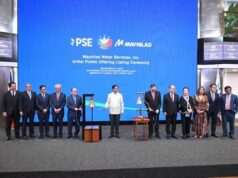July sees sustained double-digit growth pace for manufacturing — state data
THE COUNTRY’s manufacturing activity sustained its double-digit growth pace for the seventh straight month in July, the government reported on Wednesday.
Preliminary data from the Philippine Statistics Authority showed factory output, as measured by the Volume of Production Index, increased 11.8% year on year in July, faster than June’s 10.6%, and a turnaround from July 2017’s 5.1% contraction.
On the average, factory output volume has grown by 13.6% year-to-date, faster than the 4.48% recorded in 2017’s comparable seven months.
Capacity utilization rate, which measures how much of factory capacity was in use that month, averaged 84.2% with 11 of the 20 sectors posting capacity utilization rates of at least 80%.
“[G]rowth in the production volume of construction-related manufactures slightly slowed down in July with slight declines in cement production and miscellaneous non-metallic minerals. Volume of production of glass (14.3%) and basic metals (19.1%), however, posted double-digit growth,” the National Economic and Development Authority (NEDA) said in a press statement.
NEDA added that production volume growth of most export-oriented products was “sustained” in July, with increases for petroleum products (38.3%), textiles (33.5%), beverages (21.8%), and non-electrical machinery (12.1%) offsetting declines for tobacco (-64.6%), footwear and wearing apparel (-17.9%), wood products (-9.3%), and furniture and fixtures (-4.6%).
“High importation of raw materials and intermediate goods supported the increase in production levels of export-oriented goods,” the NEDA statement further read.
For Ruben Carlo O. Asuncion, chief economist at the Union Bank of the Philippines (UnionBank), the results can be attributed to the “strong positive economic growth” in the first half of 2018 that clocked in at 6.3%.
“This expansion is a momentum of manufacturing resurgence since last year. It is obvious from the influx of foreign direct investments (FDIs) and the growing trade imports,” he said, referring to the $4.847-billion FDI net flows as of May versus the $9 billion expected this year and the 13.2% growth in merchandise imports as of June. The increase in FDIs and imports of capital goods and raw materials are positively correlated with manufacturing’s performance.
“We expect this strong performance of the manufacturing sector this year as we continue to see stable domestic demand, as well as robust investments due to heightened infrastructure projects and consumer spending,” said Socioeconomic Planning Secretary Ernesto M. Pernia in the NEDA statement.
UnionBank’s Mr. Asuncion said fast inflation “can be a drag, but not completely” with price increases expected to soften next year.
“Domestic demand is growing and external demand is positive and is still expected to grow. These factors will continue to influence production growth for the rest of the year,” he added. — Marissa Mae M. Ramos



